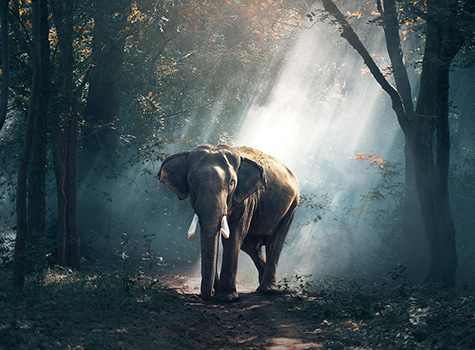By Jennifer Allen
“My effort is to slip into any role that is offered to me. The minute you go into those costumes, those grand sets, and start prepping up for the role, you become the part or at least start feeling the part.” ~ Deepika Padukone
As human beings, just about all of us have vivid imaginations that manifest in one form or another. This is typically in various forms such as writing, music, and so forth. One particular form of expression that tends to surface during this time of the year is the desire to become someone else for at least a little while.
The most common way to do this is to use a costume or other type of dress for celebrations like Halloween or Diwali. There are those who dress up for character performances in theater or movies, and some others who are a part of a subculture who wear costumes for festivals and conventions. In more recent culture, this has even further expanded with the cultivation of gaming where you can create a character (or multiple characters) who are a part of a story and have a much greater scope to look however you want.
The degree to which one wishes to pretend varies from person to person. Some may only think about it but never act on it, while others are so enamored with the concept that they disguise themselves with every opportunity imaginable.
But why has this concept of becoming someone else always been so popular?
Well, the innate ability for us to create and share stories has been with us for centuries with the concept of storytellers and bards who would travel from village to village offering tales of the fantastical mixed with a few other stories of history long past. Until writing was invented, this was one of the only ways for people at great distances to communicate and keep records.
The storytellers and bards would need to differentiate between characters with subtle voice changes and body movements to provide a more enjoyable yet informative tale. Becoming that protagonist or antagonist if even for a few moments would make the story all the more memorable and entertaining to not only to listen to but also to watch.
Eventually those simple movements of head, hands, and arms evolved into the full body articulation of dance. Here, a dancer embodies someone (or something) else just like any other storyteller, either as a main character or as a chorus performer.
Becoming that character through costuming and movements also helps the audience to experience the story with the performer. To this day, there is something quite magical about watching dancers with their beautiful costumes moving to the music and creating their own unique experience to share with the audience.
Later other forms of story as performance were created such as pantomime, plays, musicals, radio dramas, film, television, and most recently in technological mediums such as YouTube and Netflix. If the character portrayal is convincing enough, then we also become invested in the story and what each person in this narrative is trying to achieve.
Probably the most extreme are the so-called method actors out there in the modern day entertainment business. Artists like Peter Sellers, Christian Bale, Daniel Day-Lewis, Marlon Brando, and Leonardo DiCaprio can be quite intimidating when they are in costume and so embody the role that they would not break character even if accidents occurred on set or if the cameras were turned off.
In response to these performers providing us with such memorable characters to enjoy, we wanted to also be those characters. For some of us, wanting to play “dress up” at an early age was just the beginning.
The most common time to do so is during a Celtic Pagan-Christian holiday taking place at the end of October. While its traditions initially were to celebrate the end of the harvest, Christian influences would shift it into a time to honor the souls of the dead. The idea of dressing up and running from door to door on Halloween also stems from Celtic tradition as the participants would dress as spirits and ask for treats in order for said spirits to be peacefully laid back to rest.
Since about the 19th century when Halloween firmly took hold in North America, it’s often a sight of costumes for every shape and size of the person underneath. It may have started with spirits and other dark creatures of folklore, but has since become a day where anyone can become anyone else and simply have fun while doing it.
In the past few decades, this concept has further evolved with fans who enjoy a tradition known as Cosplay (short for Costume Play). Mostly taking place at sites such as Renaissance Festivals or more recently conventions for various Fantasy/Science Fiction genres. Some casually do it for fun. Some do it as a personal challenge to make a bigger and better outfit each time.
It’s always fun to see what everyone’s creative minds come up with, and how much dedication one person is willing show in order to portray that character.
But what if you don’t want to physically dress up? There’s a culture for you as well in the form of role-play games and social simulators. For some, simply creating a character on paper or a computer screen is all they need. In those mediums you are not as limited by your physical stature, so if you like you can be a character who is even a different gender, race, or species.
The most important thing to realize is that our desire to be someone else through costuming and performance is completely healthy. I’ve tapped into almost all of these ways to pretend and enjoyed every moment of it. It’s a form of escape where your imagination can be completely free. It’s a way to break the shackles of everyday mundane life, at least for a short while.
Embrace it. Enjoy it. Most of all… live it.



